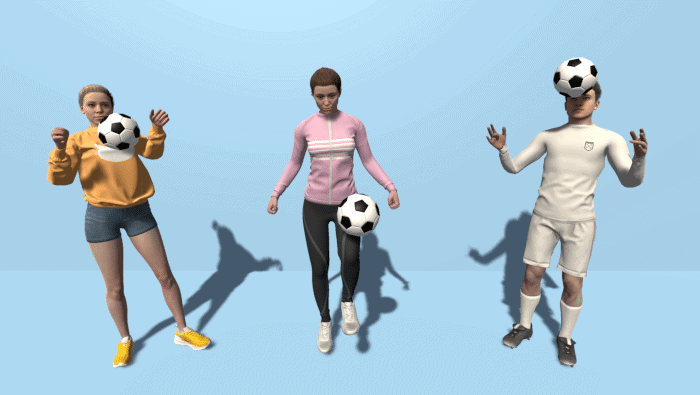If you want to become a soccer player, then there are a set of essential skills that you should learn about before you can consider yourself to be a good soccer player. One of these skills is tapping.
Before we go on with the article, you can check the list of essential skills needed from every soccer player in this article, and you can learn how good of a soccer player you are using this article.
Without further ado, let’s get started.
What does it mean for a player to trap the ball in soccer
In soccer, trapping the ball is the action of trying to receive a ball moving towards you and reducing it’s speed to nearly zero in order to be able to keep it with you (trap it). Soccer players usually trap the ball whenever they receive a pass from their teammates or whenever they find the ball moving towards them in general.
As you can very easily tell by now, trapping the ball properly is one of the most fundamental soccer skills that a good soccer player should have.
If a soccer player doesn’t know how to properly receive the ball from their teammates in a group sport like soccer, then they need to work on that as soon as possible.
Now that you know what trapping is, it’s time to talk about the different types of trapping and what each of them is used for.
Some trapping methods are meant to receive high balls while other trapping methods are meant to receive low balls.
How to trap a high soccer ball
If a high soccer ball is coming towards you, then you can either trap it with your chest, or with your head. These are the 2 most common ways of properly trapping high soccer balls.
How to trap the ball with your chest.
Trapping the ball with your chest isn’t hard but it requires some practice. Here are some tips that you will find useful whenever you are trying to trap the ball with your chest
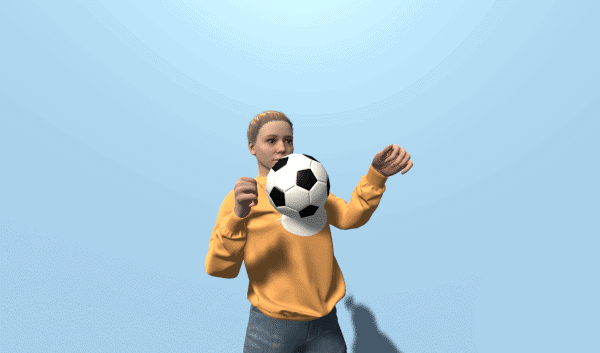
1- use the center of your chest or somewhere close to the center.
Letting the ball hit your chest somewhere near the center will make sure that you don’t touch the ball with your hands by mistake, and it also makes sure that the ball lands on a flat surface which can make it easier to control.
2- Lean backwards a little bit to cushion the ball when it hits you.
Acting flexible when you are trapping the ball is essential not just when doing a chest trap, but also when doing all the other traps that I am going to mention till the end of this article.
The one key thing that you should do when trapping the ball is to make sure that you absorb its movement completely and that you keep it within your reach after it hits you.
If you stand still and do not move at all while the ball is hitting you, then the ball will most probably bounce off and move away from you if it was moving fast towards you.
For this reason, you should move in a way that absorbs the ball’s movement speed. During a chest trap, when the ball is touching your chest, lean backwards with the ball slightly in order to not let it bounce away from you.
This might sound hard to do at first, but if you practice the chest trap a few times, absorbing the speed of the ball will become intuitive to you.
3- Direct the ball towards the direction of your choice
This is a little bit more advanced than the previous tips but it’s still a very easy thing to do with enough practice.
Remember that you are not playing alone during a soccer match. The moment the ball comes towards you, you will find your opponents running towards you too.
For this reason, you might find it useful to direct the ball towards the direction that you want while cushioning it with your chest.
If a defender is on your right, and the ball is moving towards your chest, then you can attempt to rotate your chest to the left a little bit so that the ball goes in the direction that has open space.
Just start rotating your chest a few milliseconds before the ball hits your chest and while it’s hitting your chest too in order to properly direct it towards any open space that you find around you.
4- Jump if the ball is a little bit higher than where your chest is.
If the ball is moving towards you and it’s a little bit higher than your chest, then you should jump in order to receive the ball with your chest and handle it using the tips mentioned above.
How to trap the ball with your head.
A head trap can also be used whenever a high ball is moving towards you. Usually, you should use a head trap if you can’t reach the ball with your chest when it’s too high.
In other words, for high balls, use your chest if you can, but if that’s not possible, then use your head to trap the ball.
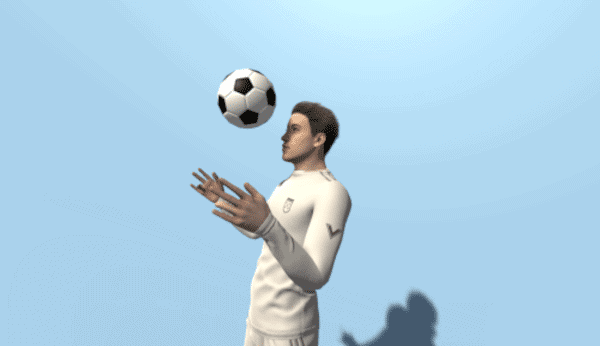
Here are some quick tips when trapping the ball with your head.
1- Use your forehead to trap the ball
The forehead is the only part of your face that can receive the ball without hurting yourself. The forehead area is also somewhat flat and can be used to handle the ball properly.
2- Lean your head backwards with the ball
This was mentioned in the chest trapping tips, and I’ll mention it here again. you should not fix your head’s position and let the ball bounce off.
Instead, you should move your head backwards with the ball to absorb the ball’s speed.
These are the best ways to receive a high soccer ball during a soccer match. However, I want to add one last note before we move on to the other types of traps.
Sometimes, you might need to do a 2 touch trap in order to handle high balls properly. In other words, you might need to use your chest or your head twice (or a combination of the 2) in order to be able to trap the ball.
This usually happens when the ball is moving too fast towards you. In this case, the first touch is to absorb the speed of the ball and launch the ball a little bit upwards, and the second touch is to trap the ball after you have reduced its speed.
For example, if the ball is moving really fast towards your chest, then you know that it will bounce off even if you lean backwards with it.
What you can do instead is reduce the ball’s speed by letting it bounce up instead of letting it bounce somewhere you can’t immediately reach. After the ball bounces up, you can use either your head or your chest to trap it again and keep it within a range that lets you handle it well.
How to trap a low soccer ball
There are a lot of trapping methods that can be used to trap low soccer balls and each method depends on how low the ball is when it’s coming towards you.
Here are the trapping methods that are commonly used with low soccer balls.
- Foot trap (Foot side, foot sole, and foot bridge)
- Thigh trap
Trapping the ball with your foot.
There are many different parts of your foot that you can use in order to trap the soccer ball, and we’ll discuss all of them next.
1- Trapping the ball with the sole of your foot.
Trapping the ball with the sole of your foot is usually known as the ‘step trap’ and it is the easiest way to trap the ball in soccer.
A step trap means that you just step on the ball to stop it. To do a step trap, the ball needs to be moving towards you while it’s on the ground, then what you do is just step on it with one foot to stop it.
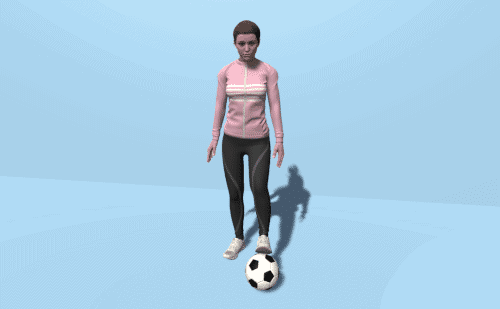
If you are new to soccer, then you should start with a step trap whenever the ball is moving on the ground towards you.
However, professional soccer players rarely trap the ball using a ‘step trap’ because it requires that they first stop the ball completely, and then move it towards the direction that they want and this is a waste of time.
During big soccer games, the players can’t afford to stall when receiving the ball or else they’ll find the opponent’s players pressing them.
2- Trapping the ball with the side of your foot.
Trapping the ball with your inner side of your foot is the most common way to handle low balls that are moving towards you. Professional soccer players use it because it allows them to direct the ball while they trap it in one touch.
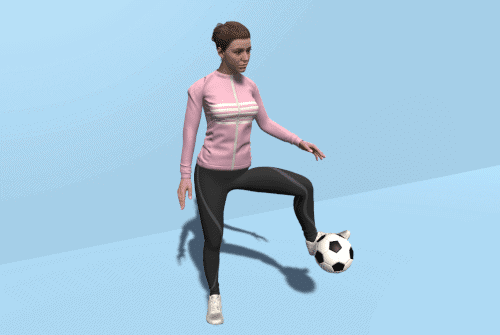
To trap the ball using the inner side of your foot, just use the tips that I mentioned before. Mainly, let your foot be flexible when the ball hit it and let it move backwards a little bit so that the ball loses its speed, and make sure that you rotate your foot properly towards the direction that you want the ball to move towards when you receive it.
As mentioned before, this might sound hard, but it becomes second nature when you practice it enough.
You can also use the outer side of your foot to trap the ball too. This is usually done when you are running fast and the ball is coming towards you from the side.
Depending on how you are running, you might not be able to receive the ball with the inner side of the foot that you are comfortable with, so what you can do instead is receive the ball using the outer side of your foot.
In general, you can use the sides of your foot to trap balls that are either on the ground, or balls that are in the air but still aren’t a lot higher than your knees.
3- Trapping the ball with the bridge of your foot.
The bridge of your foot can also be used to trap balls. If the ball is in the air, but it’s trajectory is close to being perpendicular to the ground, then you can use your foot’s bridge to trap the ball.
It’s as if you are using your juggling skills to trap the ball and keep it under control.
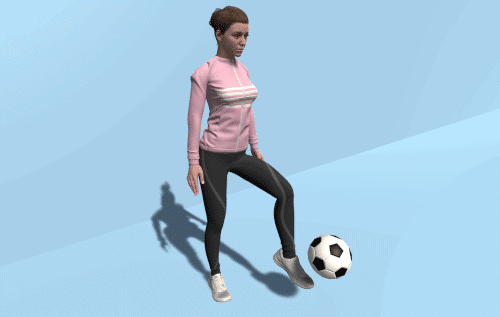
Trapping the ball with your thigh.
You can use your thighs to trap the ball if the ball is higher than your knees but it’s still lower than your chest.
In this case, you let the ball hit one of your thighs, and you let your leg move backwards a little bit when the ball hits in order to not let the ball bounce away from you.
If you notice that the ball is a little bit higher than your thighs, then you will need to jump a little bit to be able to trap the ball with your thighs.
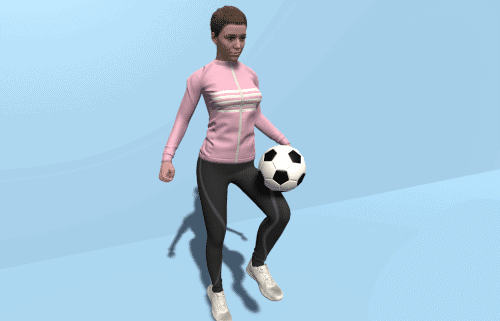
When you’re using your thighs to receive the ball, you might find it harder to direct the ball immediately to the direction that you want depending on how you are standing.
To direct the ball properly when you’re using thighs to trap the ball, you should know which thigh you should use. For example if you want to take the ball to your left, then use your right thigh and rotate it a little bit toward the left while the ball is hitting it. And vice versa.
With that said, I will end my article here. Here’s a quick summary.
SUMMARY.
Trapping the ball in soccer means receiving the ball in a way that keeps you in control of it. There are different types of trappings in soccer and they are the following:
- Head trap (very high balls)
- Chest trap (high balls)
- Thigh trap (balls that are higher than your knees but lower than your chest)
- Foot traps
- Step trap (ground balls)
- Sided trap (ground balls or balls that are not very much higher than your knee)
- Bridge trap (when the trajectory of the ball is almost perpendicular to the ground)

